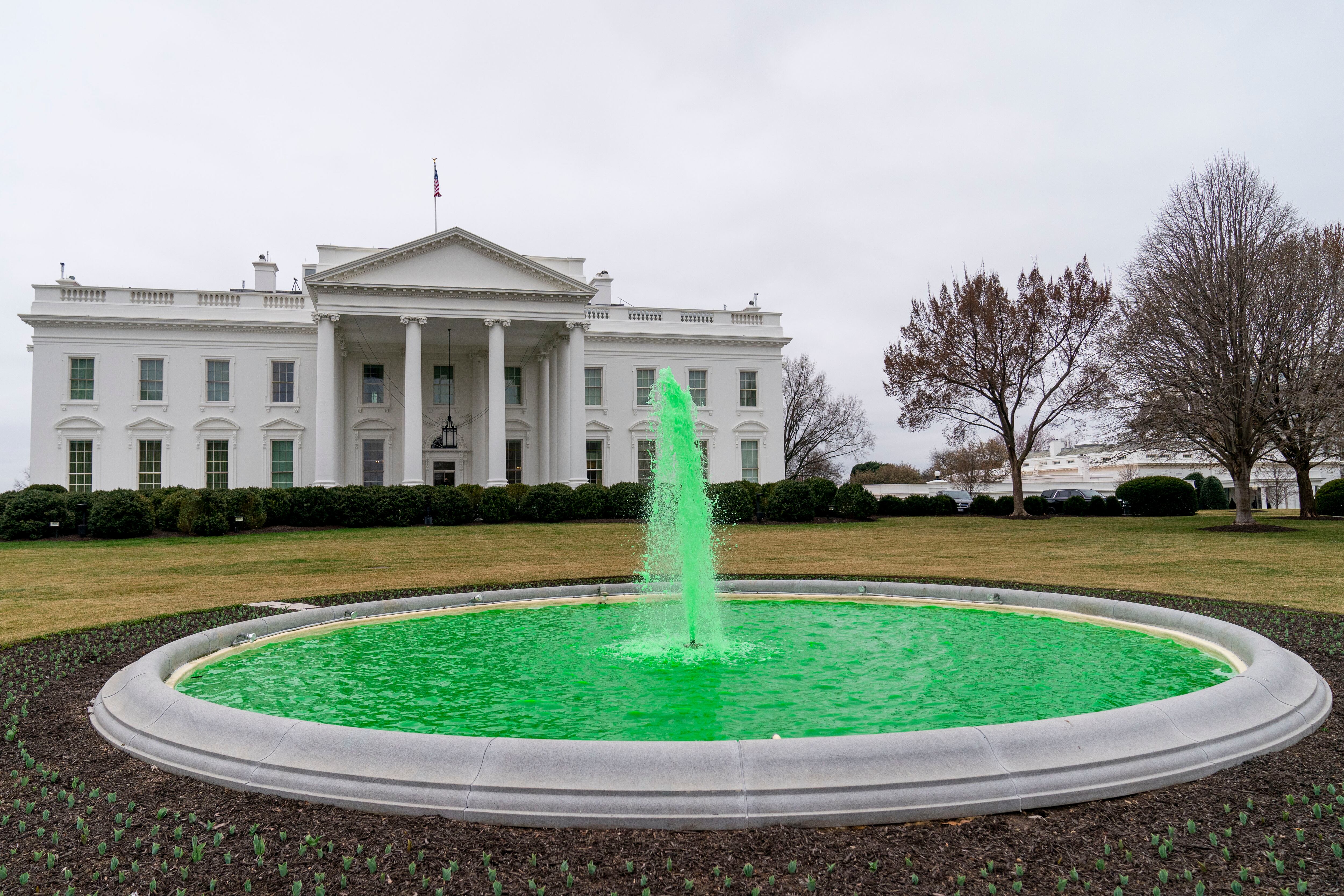Last year, members of Congress introduced a bill to make St. Patrick’s Day the 12th federally recognized holiday.
After all, half of all U.S. presidents trace their family lineages back to Ireland, and roughly one in ten Americans claim Irish ancestry, according to the U.S. Census Bureau.
While the bill, now being considered by the House Committee on Oversight and Accountability, has a long way to go before becoming law, it speaks to the shared history of the peoples of the U.S. and Ireland.
St. Patrick’s Day honors the patron saint of Ireland who is credited with spreading Christianity throughout the country and is said to have died on March 17 in the late 5th Century. According to legend, he drove all the snakes away from Ireland and used a three-leaf shamrock to teach the Holy Trinity.
RELATED

Today, St. Patrick’s is a celebration vibrantly observed in cities across the U.S. and Ireland, especially as the two countries maintain a strong relationship, as the State Department asserts. Millions of Americans trace their roots back to Ireland after waves of emigration from the European country in the 19th and early 20th centuries.
At one point, Irish Catholics in the 1830s and 40s living in the U.S. were the targets of “nativist” political parties that urged restricting immigration and a return to “traditional American ideals,” according to recounts by the Library of Congress. The country instead welcomed millions of Irish fleeing poverty and famine over the next several half century and more.
More recently, concerns about a rising tide of immigration have re-emerged, and policies for deporting undocumented inhabitants again threatened some settled Irish in American cities in 2017, reports at the time showed.
In recent years, the U.S. population of Irish immigrants has fallen dramatically, from 3.5% of all immigrants in 1960 to 0.2% in 2022, per the Migration Policy Institute. Today, the Irish immigrants and their descendents are recognized for having made many contributions to American politics, industry, organized labor, religion, literature, music and the arts.
“Sympathy for the Irish once opened up meaningful access to others around the world to come to the United States,” wrote Carly Goodman, author of “Dreamland: America’s Immigration Lottery in an Age of Restriction,” in a Washington Post editorial last year for St. Patrick’s Day. “Perhaps it can again,.”
Presidential lineage
To this day, there are clear ancestral ties between the two nations. Beginning with the seventh president and including Joe Biden, the 46th, nearly two dozen former heads of state have Irish heritage, according to the Irish Emigration Museum in Dublin.
“As many of you know, I, like all of you, take pride in my Irish ancestry,” said President Joe Biden last year at the at the Annual Friends of Ireland Luncheon, where he wore a green tie and shamrocks. “And as long as I can remember, it’s been part of my soul ... how I’ve been raised.”

The 15th president, James Buchanan is one of three former presidents who had at least one parent born in Ireland – along with former presidents Andrew Jackson and Chester A. Arthur, according to the Irish Emigration Museum. Of course, the well-known Irish-American President John F. Kennedy was also the first to visit Ireland while in Office and the first Roman Catholic to be elected to the Oval Office.
Today, the White House sometimes dyes the water in the north portico fountain green. It’s also become custom for the Irish head of state, called a taoiseach (pronounced “tee-shuhk”), to present a bowl of living shamrocks to the president as a sign of gratitude and camaraderie. 2022 year marked the 70th year of Ireland sending vibrant green shamrocks to the White House.
Some agencies take the opportunity to issue special advisories as the revelry begins.
For example, the U.S. Department of Agriculture plays a role in ensuring the imported plant is healthy and pest-free by the time it’s ceremoniously awarded to the President. These shamrock are brought within U.S. borders with a phytosanitary certificate to meet requirements.
And the National Highway Traffic Safety Administration within the Department of Transportation has urged those who feel lucky not to test their luck driving after drinking the obligatory pint.
“During the 2020 St. Patrick’s Day period, more than a third of crash fatalities involved a drunk driver,” the agency said in 2022. “In fact, from 2016 to 2020, 287 lives were lost in drunk-driving crashes during the St. Patrick’s Day period.”
Do feds get March 17 off of work?
For all the festivities and parades cropping up in Irish pubs and American bars across the country in March, federal employees are not given the day off, whether or not they’re Irish.
St. Patrick’s Day is not recognized as an official holiday in the United States, though last year, Rep. Brian Fitzpatrick, R-Pa., introduced the bill that would change that. It’s not expected to advance out of committee. His office did not return requests for comment in time for publication.
To get a federal holiday added requires congressional approval or presidential action for one-time observances. There have been attempts to add other culturally or historically significant days to the register, including Lunar New Year, Rosa Parks Day and Harriet Tubman Day.
So far none have prevailed.
Molly Weisner is a staff reporter for Federal Times where she covers labor, policy and contracting pertaining to the government workforce. She made previous stops at USA Today and McClatchy as a digital producer, and worked at The New York Times as a copy editor. Molly majored in journalism at the University of North Carolina at Chapel Hill.





